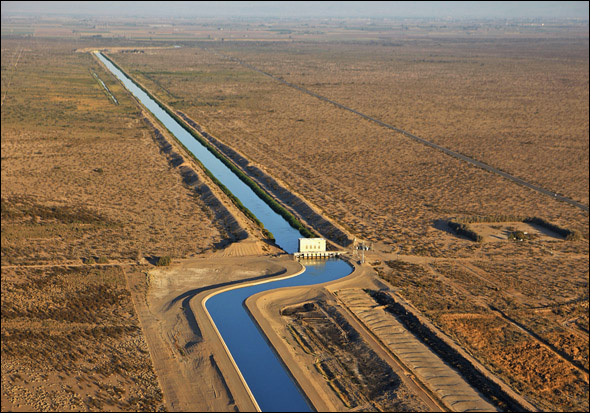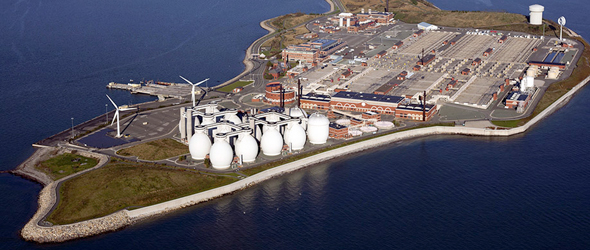Western U.S. Governors Say Water Transfers Vital But Need to Protect Rural Economies
Better data is needed too.
By Brett Walton, Circle of Blue
The voluntary transfer of water from farms to cities and industry will be an important tool for ensuring that water can be put to its highest valued use in the U.S. West, but the transactions should happen in a way that does not harm rural economies or the environment, argue a group of governors from 19 western states.
How to prevent that harm is the focus of Water Transfers in the West, a new report from the Western Governors’ Association and the Western States Water Council, an advisory body appointed by the governors.
The economies of rural communities are often intimately tied to agriculture, which has rights to most of the West’s water. Since the 1980s water has been moved out of agriculture to the region’s growing cities, which have junior rights that are less secure during dry periods, and, more recently, to its oil and gas industry. Other transfers leave water in the rivers, to restore flows.
The report describes several options for protecting rural communities:
- Revegetation of land fallowed because of a water transfer, to guard against dust and weeds
- Mitigation funds for large-scale transfers, as happened when Metropolitan Water District provided $US 6 million for the Palo Verde Valley after a 2004 agreement that affects up to 29 percent of the irrigated acres in the valley
- Policies that allow conserved water to be transferred; in other words, do away with the “use it or lose it” aspect of water law
- Fees on transactions that transfer water out of a county
The governors requested the report after passing a policy resolution in June 2011 affirming that the states “should identify and promote innovative ways to allow water transfers from agricultural to other uses (including urban, energy and environmental) while avoiding or mitigating damages to agricultural economies and communities.”
More Data Needed
The report is valuable in other ways, said Nathan Bracken, legal counsel for WSWC, who wrote several sections. It brings together information on how each state regulates water transfers.
But Bracken told Circle of Blue more data should be collected on the water transfers themselves—the number of transaction, the volumes of water transferred, and the prices paid—and the data needs to be made publicly available. Existing data sets are often incomplete. The leading publication on water transfers, Water Strategist, recorded only 117 transfers in Oregon from 1999 to 2008, but the Oregon Water Resources Department said that it processed more than 4,000 transfers during that period.
Matt Payne, an associate with WestWater Research, a water market research firm, told Circle of Blue the same thing.
“Data collection takes a lot of time and it is expensive,” he said. “Many times people want to keep that proprietary.”
A transaction database would bring many benefits to a state. According to the report:
“An easily searchable database could help potential buyers, lessors, or sellers gauge market activity when considering a water transfer. Information about how others have reached deals on the volume, timing, or price of a transfer can provide a framework for creating a new transfer agreement.
Additionally, a public database could offer a quick way to gain perspective on which regions of the state are experiencing the most water transfers, which buyers are working to attain water rights in the state, and which water basins were benefiting most from instream flow donations.”
Utah and Washington, for example, have online databases but do not guarantee the information is complete or up to date.
The Public Policy Institute of California is one organization that provides open data. It recently published an assessment of California’s water market. Transfers account for 5 percent of the state’s water use now.
Brett writes about agriculture, energy, infrastructure, and the politics and economics of water in the United States. He also writes the Federal Water Tap, Circle of Blue’s weekly digest of U.S. government water news. He is the winner of two Society of Environmental Journalists reporting awards, one of the top honors in American environmental journalism: first place for explanatory reporting for a series on septic system pollution in the United States(2016) and third place for beat reporting in a small market (2014). He received the Sierra Club’s Distinguished Service Award in 2018. Brett lives in Seattle, where he hikes the mountains and bakes pies. Contact Brett Walton





Leave a Reply
Want to join the discussion?Feel free to contribute!